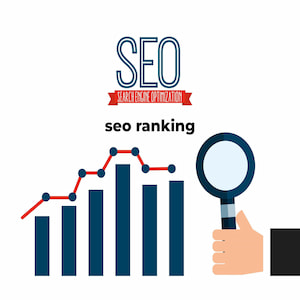Can I Put AI on My Website?

The Future Just Landed on Your Homepage
Ever wish your website could think for itself? Imagine this: a visitor lands on your site at 2 a.m., asks a question, and gets a helpful, human-like response — without you lifting a finger. That’s not sci-fi. That’s AI in 2026.
If you’ve ever asked, “Can I put AI on my website?” the answer is a confident yes. And not just yes — you probably should. AI has gone from buzzword to business backbone. It’s not just for tech giants anymore. Now, even indie creators and solopreneurs can harness the power of artificial intelligence to boost engagement, drive conversions, and make their sites work harder — and smarter.
Why You’d Want AI on Your Website
Let’s get one thing clear: adding AI isn’t about replacing humans. It’s about scaling your time and leveling up the customer experience.
Here’s what AI brings to your site:
| Feature | What It Does | Why It Matters |
|---|---|---|
| Chatbots | 24/7 instant responses | Better support, more conversions |
| Personalization | Tailors content for each visitor | Boosts engagement and time on site |
| Content Recommendations | Suggests blogs or products | Improves retention and sales |
| Automation | Handles bookings, lead capture, emails | Saves you hours per week |
Still wondering “Why now?” Because your competitors are already doing it.
What Types of AI Can You Add to a Website?
There’s no one-size-fits-all here — and that’s a good thing. Depending on your goals, here’s what’s possible:
1. AI Chatbots (Your New 24/7 Team Member)
An AI chatbot doesn’t sleep, doesn’t get moody, and handles FAQs like a pro. Tools like Tidio and ChatGPT can be embedded in minutes. You can customize tone, language, and actions — from collecting leads to recommending products.
Example:
Running an eCommerce site? A bot can answer product questions, process returns, and upsell — all before you’ve had your morning coffee.
2. AI for Content Personalization
Remember when Netflix knew what you’d want to watch next? That’s AI personalization in action. Platforms like Segment or Dynamic Yield help tailor website experiences based on visitor behavior.
Use Case:
Show different content to a returning customer versus a new visitor. Or recommend articles based on what someone just read.
3. Voice Assistants and AI Search
Voice-based AI, like integrating Google Assistant-style voice search, is growing — especially for accessibility. Services like Alan AI let you add voice capabilities to your site.
4. AI for Automation (Behind-the-Scenes Genius)
You can automate email responses, form routing, CRM updates, and more using Zapier’s AI tools. Your site becomes a smart assistant, handling admin while you focus on big-picture strategy.
How do I use AI to promote my website?
How to Add AI to Your Website (Step-by-Step)
You don’t need to be a coder in a hoodie. Here’s how to get started:
Step 1: Define the Problem AI Will Solve
- Do you want faster customer service?
- More conversions?
- Smarter analytics?
Step 2: Choose the Right Tool
- For chat: ChatGPT, Tidio, Drift
- For personalization: Dynamic Yield, Optimizely
- For automation: Zapier, Make
- For analytics: Piwik PRO, Google Analytics with AI features
Step 3: Embed It on Your Site
- Most tools offer a copy-paste JavaScript snippet or a WordPress plugin.
- Test thoroughly on mobile and desktop.
- Use triggers wisely: Don’t annoy visitors with bots popping up immediately.
Step 4: Train and Tweak
- Feed your AI with FAQs or customer behavior patterns.
- Review conversations weekly.
- Optimize for tone, accuracy, and helpfulness.
Real Talk: The Pros and Cons
Pros:
- Round-the-clock engagement
- Increased efficiency
- Better data insights
- Scalable personalization
Cons:
- Some tools have steep learning curves
- Overuse can feel impersonal
- Monthly costs (most tools aren’t free forever)
Pro Tip: Don’t over-automate. AI should assist the human experience, not replace it.
Can AI Replace Human Interaction?
Let’s get this straight — AI’s impressive, but it doesn’t replace your brand’s voice. It enhances it.
Think of AI like espresso in your website strategy. It doesn’t write the whole menu, but it keeps things running strong.
Use it to handle the routine so you can show up where it counts: strategy, creativity, human connection.
Conclusion: AI Is Ready. Are You?
Yes, you can absolutely put AI on your website — and if you care about scaling smarter, it might be one of the best moves you make this year.
From chatbots that never sleep to automation that makes your inbox lighter, AI is your new business partner.
So what’s next?
Explore tools like ChatGPT or Tidio
Map out your use cases
Test small, optimize often
AI isn’t the future. It’s now. And your website is ready for it.
disadvantages of ai in e-commerce
Frequently Asked Questions
Q1: Is it hard to add AI to a website?
Not at all. Many tools offer simple plugins or code snippets, no coding needed.
Q2: Will AI slow down my website?
Most modern tools are optimized for performance. Always test your site speed after adding anything new.
Q3: Can I use free AI tools?
Yes, many offer free plans with basic features. Great for starting out.
Q4: Is it secure to use AI on my site?
As long as you use reputable tools and follow data privacy regulations (like GDPR or CCPA), you’re in good shape.
Q5: Can AI help with SEO?
Absolutely. AI can optimize meta tags, improve internal linking, and analyze keywords — all automatically.

